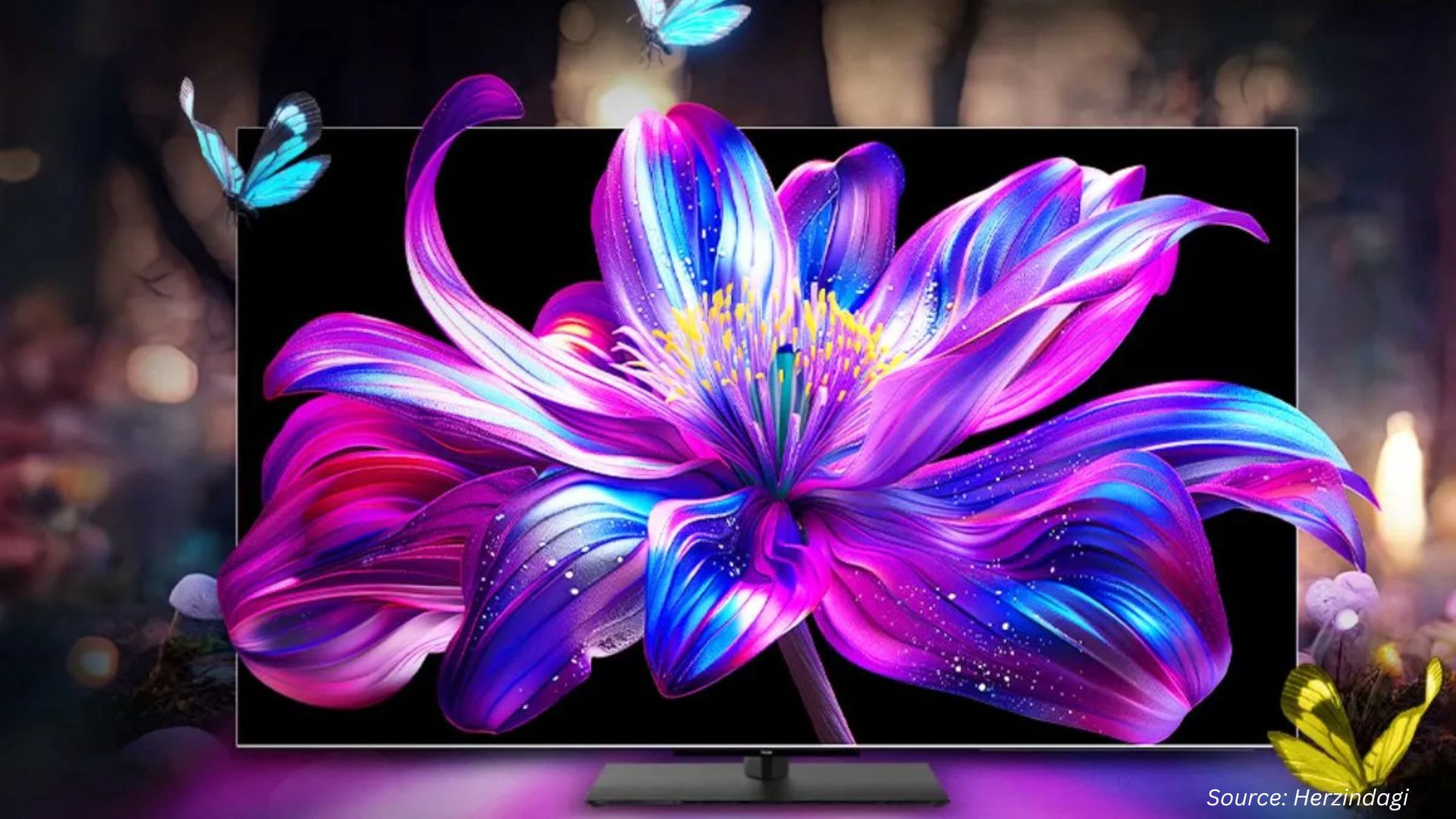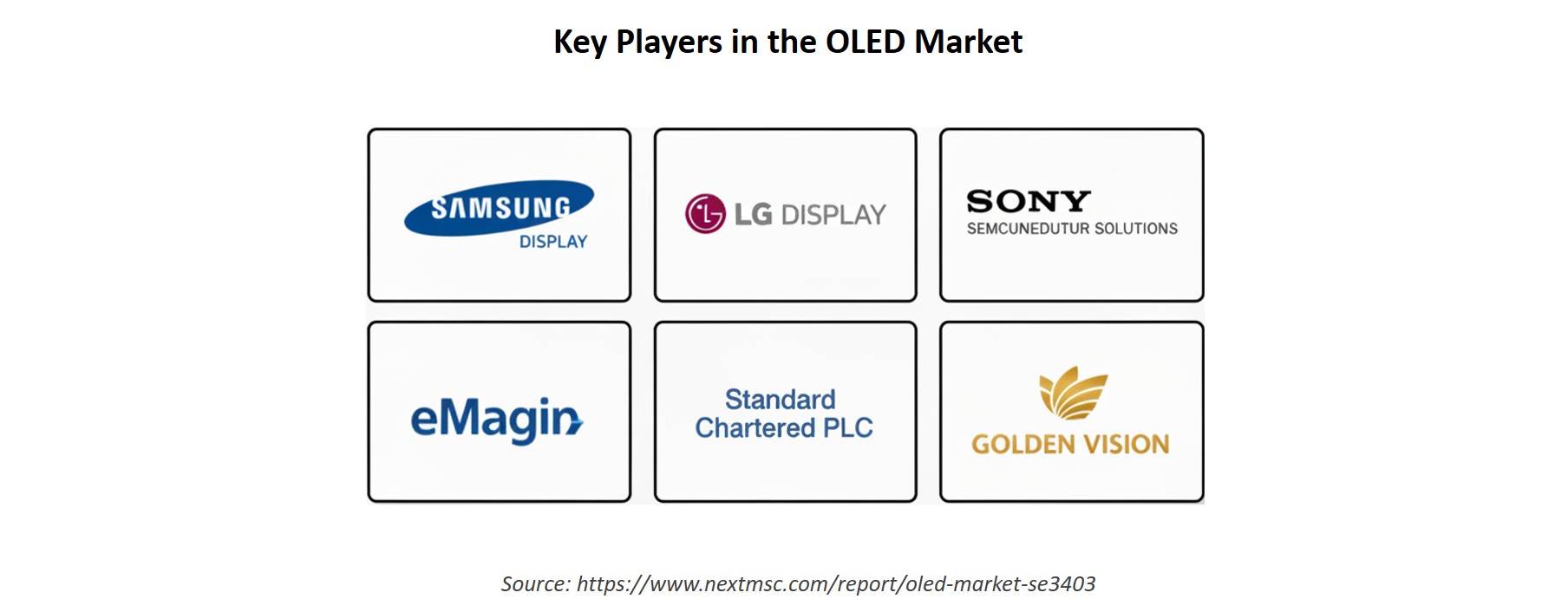OLED Trends 2025: What Are the Most Impactful Innovations Shaping the Future of Displays?
Published: 2025-11-28

Organic Light-Emitting Diode (OLED) technology is entering one of its most transformative periods. With breakthroughs in gaming displays, transparent consumer televisions, and next-generation device upgrades from major brands, the OLED ecosystem is moving rapidly toward higher performance, more immersive experiences, and entirely new form factors. This blog explores the trending OLED topics of 2024–2025 using verified information from Samsung, Apple, and LG, along with a strategic outlook. More importantly, OLED’s evolution is driven by consumer and industry demand for more vibrant, energy-efficient, and flexible display solutions. The ability to deliver perfect blacks, ultra-fast response times, high peak brightness, and thinner, lightweight form factors is accelerating OLED adoption across sectors ranging from gaming and personal computing to automotive dashboards, luxury retail installations, and even hospitality environments. OLED is shifting from a premium add-on to a core technology defining the visual experiences of the future.
Why Is Ultra-High Refresh Rate OLED Technology Becoming a Game-Changer for Gamers?
Ultra-high refresh rate OLED technology is redefining competitive gaming, and 2025 marks a major turning point. Samsung’s launch of the world’s first 500Hz OLED gaming monitor, the Odyssey OLED G6, introduced globally in May 2025, demonstrates how OLED is no longer just about richer colors—it is now about unmatched speed, responsiveness, and immersion.
At its core, the gaming industry has always evolved around speed. Faster displays offer players a competitive edge, minimize motion blur, and allow smoother transitions in fast-paced action scenes. Samsung’s milestone proves that OLED is now capable of delivering performance levels once only achievable through specialized esports monitors.
Key Verified Specs
|
Feature |
Details (2025) |
|
Refresh Rate |
500Hz |
|
Response Time |
0.03ms (GTG) |
|
Resolution |
QHD (2560 × 1440), QD-OLED |
|
HDR |
VESA DisplayHDR True Black 500 |
|
Brightness |
Peak 1,000 nits |
|
Color Accuracy |
Pantone Validated |
How Does a 500Hz OLED Display Transform Competitive Gameplay?
Samsung’s Odyssey OLED G6 pushes display performance beyond conventional limits. With a 500Hz refresh rate, a 0.03ms grey-to-grey (GTG) response time, and a QHD (2,560 × 1,440) resolution, this monitor delivers an exceptionally fluid and highly responsive gaming experience. Samsung’s Odyssey OLED G6 represents a groundbreaking shift in what gamers can expect from high-performance displays. By introducing a 500Hz OLED monitor—the first of its kind globally—Samsung has effectively redefined competitive gameplay standards for 2025 and beyond. At the core of this transformation is a combination of three critical performance factors: an ultra-high 500Hz refresh rate, an extraordinary 0.03ms grey-to-grey (GTG) response time, and a QHD (2,560 × 1,440) QD-OLED display. Together, they create a gaming experience that is not only smoother but also more accurate, more immersive, and more competitive.
Key Advantages of the G6 for Gamers
|
Feature |
Why It Matters for Gamers |
|
500Hz refresh rate |
Smoother motion and faster frame |
|
0.03ms response time |
Near-instant pixel changes reduce |
|
QD-OLED panel |
Delivers richer colors, deeper blacks, |
|
VESA DisplayHDR True Black 500 |
Improved realism in dark scenes |
|
NVIDIA G-SYNC Compatible & |
Tear-free, stutter-free gameplay |
|
Peak brightness of 1,000 nits |
Better visibility in high-dynamic |
How Is Apple’s OLED Transition Reshaping Tablets and Laptops?
Apple’s long-anticipated shift toward Organic Light-Emitting Diode (OLED) displays marks one of the most significant technological transitions in the company’s hardware strategy. While Apple has used OLED panels in iPhones and the Apple Watch for years, the expansion of OLED into iPads and MacBooks signals the beginning of a new era for Apple’s larger-screen devices. This transition is not merely an upgrade in display quality—it represents a complete rethinking of the visual experience across Apple’s productivity ecosystem.
Apple is taking a phased, multi-year OLED rollout across its device lineup, driven by the demand for enhanced brightness, superior contrast ratios, deeper blacks, and high color accuracy. With Apple’s reputation for adopting display technologies only when they meet its exacting standards, this shift reflects both maturity in OLED manufacturing and advancements in hybrid OLED structures that deliver exceptional durability and long-term performance.
Apple’s OLED Upgrade Timeline
|
Device |
Expected OLED Launch |
|
iPad Mini |
As early as 2026 |
|
iPad Air |
2027 |
|
MacBook Air |
2028 |
Apple’s transition to OLED is reshaping its tablet and laptop strategy through a phased approach that balances premium display performance with product-line differentiation. While OLED is already standard in flagship devices like the iPhone, iPad Pro, and Apple Watch, Apple is now extending the technology to more models—most notably the upcoming iPad mini, which is expected to see a price increase of up to $100 due to the higher cost of advanced OLED components. Industry reports also indicate that Apple is preparing a MacBook Air refresh powered by the M5 chip in spring 2026; however, this model is not expected to adopt OLED, as Apple is reserving the transition to OLED MacBooks for later in its roadmap. Together, these developments highlight Apple’s cautious but deliberate strategy of integrating OLED where it provides the strongest user-experience benefits while managing costs and production timelines for its broader device ecosystem.
Transparent OLED: The Future of Immersive Visual Experiences Unfolds with LG’s Kinetic OLED Chandelier
Transparent OLED technology is redefining what immersive digital experiences can look and feel like, and LG’s showcase at APEC 2025 is one of the most striking examples of this revolution. The company unveiled a breathtaking kinetic media chandelier built from twenty-eight transparent 77-inch LG SIGNATURE OLED T TVs—an installation that blends art, architecture, and next-generation display engineering. Each OLED panel can seamlessly shift between transparent and opaque states, allowing the structure to transform dynamically from a delicate glass-like sculpture into a vivid, high-contrast smart display. As the chandelier moves, its panels open and close like blooming petals, creating a mesmerizing kinetic effect that turns the entire installation into a living sculpture. The visuals it displays—ranging from deep-space interstellar scenes to tranquil underwater worlds and vibrant stained-glass patterns—appear to float in midair, enhancing the sense of depth and immersion. What makes the experience even more futuristic is LG’s True Wireless technology, which eliminates visible cables and enables stable, latency-free 4K transmission. By merging transparency, motion, and high-resolution OLED imagery, LG is demonstrating how transparent OLEDs can evolve beyond conventional screens and become interactive, dynamic elements within homes, museums, retail spaces, and public art installations—transforming how people perceive and engage with digital content in physical environments.
Next Move Strategy Consulting’s View
According to Next Move Strategy Consulting (NMSC), the OLED market is entering a powerful growth phase, projected to surge from about USD 70.99 billion in 2025 to nearly USD 191.61 billion by 2030, driven by rapid innovation and expanding applications across smartphones, monitors, laptops, automotive displays, and commercial signage. NMSC notes that breakthroughs such as flexible, transparent, and QD-enhanced OLED panels—combined with wider adoption in gaming, premium tablets, and immersive installations—are accelerating OLED’s shift from a premium niche to a mainstream display standard. However, they caution that high manufacturing costs, falling average selling prices, and the need for continuous R&D remain challenges that could pressure margins for manufacturers. Still, as companies like Samsung, LG, and Apple expand OLED integration and global production capacity increases, NMSC believes OLED will become the visual backbone of next-generation digital experiences. Overall, 2025 marks a decisive turning point for OLED technology, with unprecedented innovation, broader industry adoption, and rising consumer demand converging to shape a future where OLED delivers faster, brighter, more flexible, and more immersive displays across every major device category.
About the Author
 Tania Dey is a highly experienced Content Writer and a passionate SEO Executive with a specialized focus on digital transformation, technology trends, and industry-focused insights. She has honed her expertise in creating compelling, data-driven content that not only enhances online visibility but also aligns with the ever-evolving demands of modern business landscapes. Her work spans a diverse range of industries, including technology, and digital services, enabling organizations to communicate their vision and value propositions effectively to both niches.
Tania Dey is a highly experienced Content Writer and a passionate SEO Executive with a specialized focus on digital transformation, technology trends, and industry-focused insights. She has honed her expertise in creating compelling, data-driven content that not only enhances online visibility but also aligns with the ever-evolving demands of modern business landscapes. Her work spans a diverse range of industries, including technology, and digital services, enabling organizations to communicate their vision and value propositions effectively to both niches.
About the Reviewer
 Sanyukta Deb is an accomplished Content Writer and Digital Marketing Strategist with extensive expertise in content strategy, SEO, and audience engagement. She specializes in building strong brand visibility through data-driven campaigns and impactful, value-added researched content. With a passion for creativity and innovation, she blends strategic thinking with design and communication to craft meaningful digital experiences. Over the years, she has contributed cross-functional marketing projects, driving measurable impact and audience engagement.
Sanyukta Deb is an accomplished Content Writer and Digital Marketing Strategist with extensive expertise in content strategy, SEO, and audience engagement. She specializes in building strong brand visibility through data-driven campaigns and impactful, value-added researched content. With a passion for creativity and innovation, she blends strategic thinking with design and communication to craft meaningful digital experiences. Over the years, she has contributed cross-functional marketing projects, driving measurable impact and audience engagement.

















Add Comment